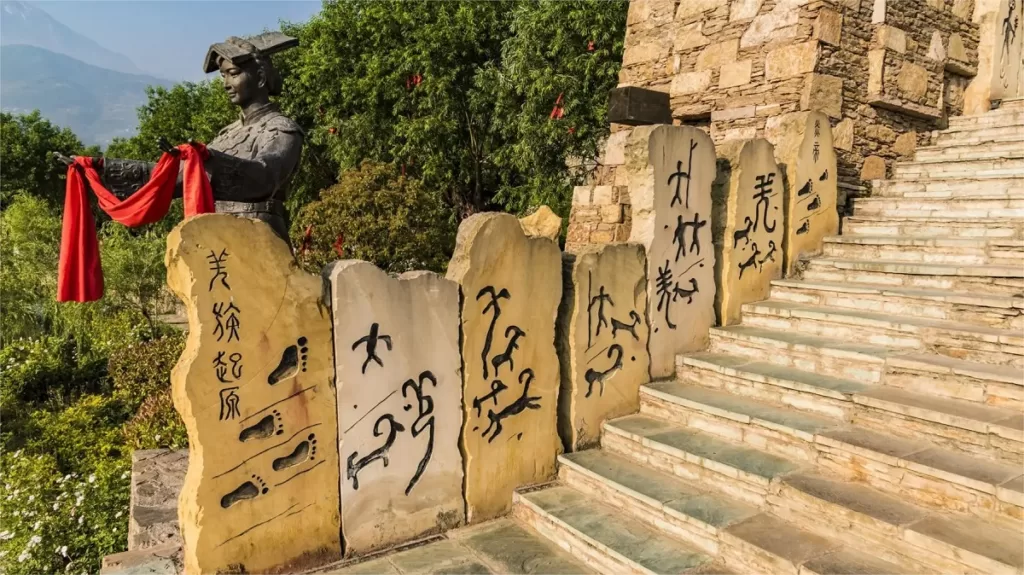Indigene Völker im Jiuzhai-Tal


Nestled in the eastern foothills of the majestic Tibetan Plateau, lies Jiuzhai Valley, a breathtakingly beautiful and culturally rich region in China. Covering an area of over 700 square kilometers, Jiuzhai Valley has been the ancestral home of indigenous people for millennia, boasting a rich tapestry of unique cultures, traditions, and beliefs that have remained resilient against the test of time.
The indigenous people of Jiuzhai Valley, primarily composed of the Qiang and Tibetan ethnic groups, have long inhabited this pristine landscape. Their presence in the valley can be traced back thousands of years, as evidenced by archaeological discoveries and oral traditions passed down through generations. The Qiang people, known for their vibrant costumes and intricate wood-carving skills, have been the custodians of the valley’s southern region. The Tibetan people, on the other hand, have thrived in the northern areas, preserving their ancient customs, including the distinct art of thangka painting and chanting Buddhist scriptures.
The symbiotic relationship between the indigenous communities and nature in Jiuzhai Valley is remarkable. The people have developed a profound understanding of the local ecosystem, adopting sustainable practices that ensure the preservation of the valley’s natural wonders. Their traditional knowledge has contributed to the conservation of the region’s delicate flora and fauna, making Jiuzhai Valley a UNESCO World Heritage Site.
One of the key features that epitomize the indigenous people’s harmonious connection with nature is their reverence for the nine Tibetan villages dotted throughout the valley. These villages are aptly named after the nine Tibetan villages mentioned in ancient Tibetan mythology. Each village serves as a testament to the indigenous people’s traditional architecture, characterized by wooden houses, colorful prayer flags, and intricate carvings that blend harmoniously with the surrounding landscape.
Cultural festivals are an integral part of life for the indigenous people of Jiuzhai Valley. These vibrant celebrations not only reinforce their sense of community but also serve as opportunities to showcase their rich cultural heritage to visitors. Festivals like the Qiang New Year, with its lively dances and rituals, and the Tibetan Butter Lamp Festival, where butter lamps illuminate the night sky, provide an enchanting glimpse into their customs and beliefs.
Language plays a pivotal role in preserving the indigenous people’s identity and cultural heritage. The Qiang people speak a unique language, while the Tibetans use their distinct Tibetan language and Tibetan script. These languages, passed down through generations, encapsulate the wisdom and knowledge accumulated over centuries, adding another layer of cultural significance to Jiuzhai Valley.
As Jiuzhai Valley gains global recognition as a natural wonder, there comes the challenge of preserving the indigenous culture amidst modernization and tourism. Fortunately, efforts are underway to promote sustainable tourism that respects the local communities and their way of life. Through community-based tourism initiatives, the indigenous people actively engage with visitors, sharing their customs, art, and culinary traditions, fostering cross-cultural understanding, and generating economic opportunities that benefit the local populace.
In conclusion, Jiuzhai Valley stands as an invaluable sanctuary of indigenous culture and nature, where the Qiang and Tibetan ethnic groups have maintained their unique identities and traditions for countless generations. As we venture into the future, it is imperative that we continue to celebrate and support the preservation of their heritage, ensuring that this extraordinary connection between people and nature endures for generations to come. By appreciating and respecting the indigenous communities of Jiuzhai Valley, we can truly experience the profound beauty and wisdom that this ancient sanctuary has to offer.
Fakten zum Jiuzhai-Tal-Nationalpark